When the best Ranger in the Sierras goes missing.
The mysterious disappearance of Randy Morgenson
THE LAST SEASON, by Eric Blehm. This is the best book I've read all year, on many levels. It could be called, “What Happened to Ranger Randy Morgenson”. One National Park, One missing ranger. This book sits on the shelf right next to Jon Krakauer’s INTO THE WILD. There's a similar harrowing story, in a far-off place, written really well. (This is not a new book, just new to me.)
For 28 years, Randy Morgenson was the finest Seasonal Ranger in Kings Canyon and Sequoia National Parks in the Sierra Nevada Mountains of California. Then one day in 1996 he simply disappeared. He packed up his knapsack, put his supplies in the rodent and bear-proof lockers, pinned a note to his tent flap (“June 21: Ranger is on patrol for 3-4 days…”) and departed for a seemingly routine patrol in the far reaches of the High Sierra backcountry, and vanished. What followed was perhaps the largest search-and-rescue operation in the history of the National Parks.
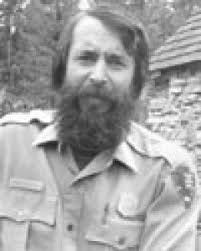
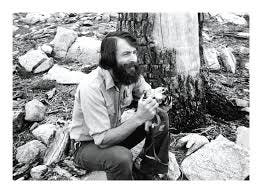
What the heck happened? Within the tight-knit community of national park rangers, after 28 years of service, Randy Morgenson had become an icon. He was a legend, an inspiration to even the most tenured rangers. Nobody in the entire Park system reflected its values better than Randy. His intense love, knowledge and passion for nature earned him the highest respect from colleagues. To hikers, campers, wilderness trekkers and his peers, he lived a dream job, outdoors in one of the most beautiful environments in the world. Then one day, he walked off and disappeared. Was it intentional? Did he get lost? Suicide? Horrific accident while out on patrol? Or did he simply want to hide from the world. THE LAST SEASON tackles all these questions.
Randy Morgenson was born, raised and lived his entire life in the breathtaking national parks of California. His father was a manager for Curry Company, the concessionaire for Yosemite National Park. That’s where Randy was born and grew up – his back yard was literally all of Yosemite. His parents instilled in him the deepest appreciation for nature, hiking, and wandering. He learned independence and while never a hermit or antisocial, he had an appreciation for the beauty of solitude. He learned everything about plants, animals and insects, down to the smallest details of the most fragile mountain flower. He shared his appreciation to anybody who would listen. Randy was famous for the ability to recite scientific names of the most obscure plants and explain how the tiniest little blossom could cling to life at high elevation, during a short growing season, in brutal elements. His world became one of sleeping on the granite of Half Dome, or underneath El Capitan, staring at the stars.
Randy was smart and likeable; but in time he dropped out of college, bounced a bit, learned a bit about writing and photography. But all along his dream was to become a Ranger in the Sierras. He was hired as a seasonal summer Ranger in Kings Canyon and Sequoia National Parks, which touch each other in the southern Sierras of California. He’d remain one for 28 years, until he vanished. His Sierra domain was among the most formidable in the country. It’s a harsh, mountainous terrain with few roads, even to this day. The eastern Sierras hold several peaks over 14,000 feet, including Mount Whitney, the highest point in the continental United States. As a Seasonal Ranger he worked the most remote backcountry of the Parks from June through September. Often the snow would be impassably deep even to the end of July. The position of “seasonal backcountry ranger” is a strange one, one that I didn't even know existed. As a backcountry ranger you're not assigned to a ranger station, an entry booth, a visitor center, not even in a campground. Nor are you in the popular areas of the Parks, where 99% of the tourists go. Instead, Randy's job placed him in the deepest backcountry of Kings Canyon, at an elevation of 10,800 feet, far from roads and even trails. For 28 summers his home was a mere 12’ X 15’ canvas tent resting on a plywood platform that he shared with mice and birds. A steel bucket for water, 2-burner Coleman for a kitchen, with a bear-proof locker and old picnic table outside. He was totally on his own, many miles, mountains and valleys away from the next seasonal ranger.


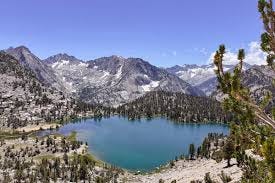
To stay in touch, Randy was issued a crummy radio which constantly malfunctioned or had a dead battery. He checked in every few days. His job was to patrol the vast backcountry, where there were no borders, no trails, no tents, and very very few people. The weather was harsh and unpredictable, blizzards could hit in September, thunderstorms at any time. He received low pay, and no benefits. And Randy loved it. For 28 years. The Sierra backcountry was wickedly beautiful; he could pursue his love for descriptive writing and outdoor photography.
Randy was perfect for the position. He loved the outdoors more than he did people. He relished solitude. His routine: put a little food in a backpack, take a light sleeping bag, a poncho, an extra shirt, zip up his tent and head out cross-country into the hinterlands, where instead of trails or landmarks, he found unnamed peaks and lakes yet to be on any map. His job was to look for anything out of the ordinary: the rare trekker who’d run out of food or water; an injured hiker; the fool caught in a snowstorm or was otherwise unprepared for the cold; a renegade campground or fire-ring (which he’d then dismantle and disperse); litter (In 28 years he collected over 34,000 pounds of bottles, cans, and trash.); and keep an eye out for forest fires, or otherwise see what he could stumble into and be helpful. Along with only 13 other Rangers, they patroled — on foot — an area larger than Rhode Island.
Randy was no whacked-out loner. He had a great network of friends across the West, maintained a home and wife in Sedona, and corresponded with other writers and photographers. During winter months he traveled or took other part time ranger jobs within the Park system. He was no saint -- he fooled around on his wife.
But he always returned to his beloved Sierras. The one main pathway through his sector was the John Muir Trail, but this was patrolled by the year-round rangers. Randy’s work took him where there were no trails. When he did encounter a hiker, he was famously congenial and respectful. He was happy to discuss the history, geology, botany, and the weather. Then one day, after 28 years, he embarked on one of his extended patrols, stopped using his radio, and never returned.
I can say that I’m at least slightly familiar with this part of the Sierras. Growing up in SoCal, whether through Boy Scouts, camping, or backpacking trips, we spent time in the southern and eastern Sierras. I learned to read a topo map in Kings Canyon, hiked parts of the John Muir Trail and dreamt of reaching the top of Mt Whitney, which is hike-able. We gaped at the big trees in Sequoia and fished its rivers and streams. It’a all a combination of breathtaking beauty and impenetrable remoteness. The Sierras are world class mountains often steeper than the Rockies. It’s a primitive area, wild animals are plentiful. To venture off trail is unforgiving.
To start with such a primitive area, then purposefully seek and live in its backcountry, is unfathomable to me. It’s a life so far from the normal life of a city or suburban person, with little communication or contact. Randy lived a Thoreau-like fantasy, with a gentle soul and profound vision of the world. Other rangers labeled him a hero with character of the highest order. His motivation to work alone in one of the most remote locations in America was never questioned. So after 28 years, without telling a soul where or for how long he was leaving, why did he walk away into the wilderness?
Author Eric Blehm uses the early chapters to establish Randy's credentials as an outdoorsman, ranger par-excellence, and devotee to his job. Then the biography turns into a gripping mystery, and a mesmerizing search-and-rescue tale within one of the most difficult geographies in North America. Does Randy eventually turn up? Do the hundreds of searchers and many helicopters track him down? Does he leave clues for his pursuers? Did he meet with foul play? The last half of the book describes the disappearance and how the Park service sprang into action. After all, it was the famous Randy Mortgenson; his dozens and hundreds of friends mobilized and tapped into every resource available. Fellow rangers from across the country flocked in to assist with the search. They brought the best tracking dogs. What happened to Randy? I won’t be the spoiler.
So many of us can relate to aspects of this book. But for anyone who’s spent any time at all hiking, visiting a National Park, or being in the mountains, this book will absolutely resonate with you. Anyone who's strived to make the outdoors and nature a bigger part of his or her life, THE LAST SEASON will haunt you. You read THE LAST SEASON to penetrate an extraordinary life, while flawed and certainly unorthodox, it’s one that was truly well-lived and respected. You read THE LAST SEASON to gain insight into how an enormous search-and-rescue operation works, and witness the strategy, frustrations, second guessing, and teamwork. You read THE LAST SEASON because it's a genuine wilderness mystery, a detective story of the highest order. Finally, you read THE LAST SEASON for its powerful descriptions of the Sierras and its endless elements of nature. THE LAST SEASON (or, What Happened to Randy Morgenson) is a great mystery tale about a truly unique individual, living a life of abstinence, beauty, and humility, all the while fulfilling his passions. Big recommendation. Here it is on Amazon.
____________________________________________________________________________
Thanks for reading. Update for both new and old followers: I’ve written seven novels of funny and high-concept fiction. Last month, with little promotion or fanfare, my first novel CHIP ROCK and the FAT OLD FART reached NUMBER ONE (!!!) in both Amazon categories of Coming-of-Age Fiction, and Christian Fiction.
A week later, ZIN MIGNON and the SECRET of the PICKLED PIGS' FEET , also hit NUMBER ONE in Children’s Cooking Books, Children’s Career Books, and Children’s Jobs. ZIN is a 13-year-old genius/celebrity Chef and this book leads a 4-book series. All quite clean, funny, inspirational, well-plotted. Get a kid a good book today!
MD in AZ




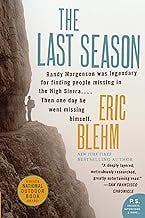


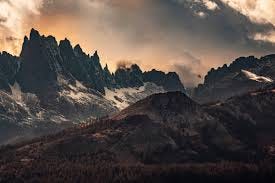
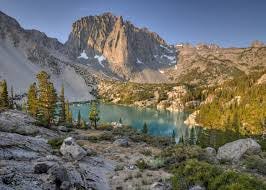
Getting the book now!